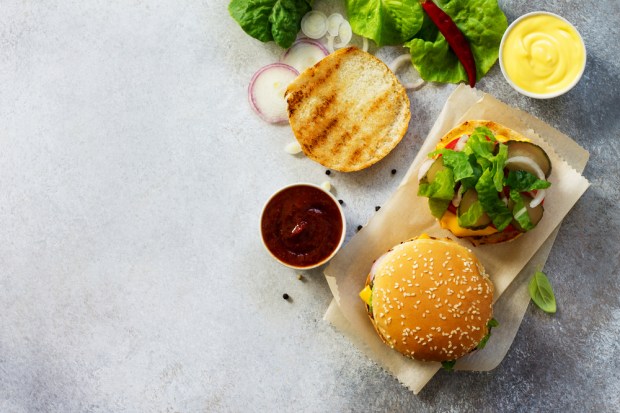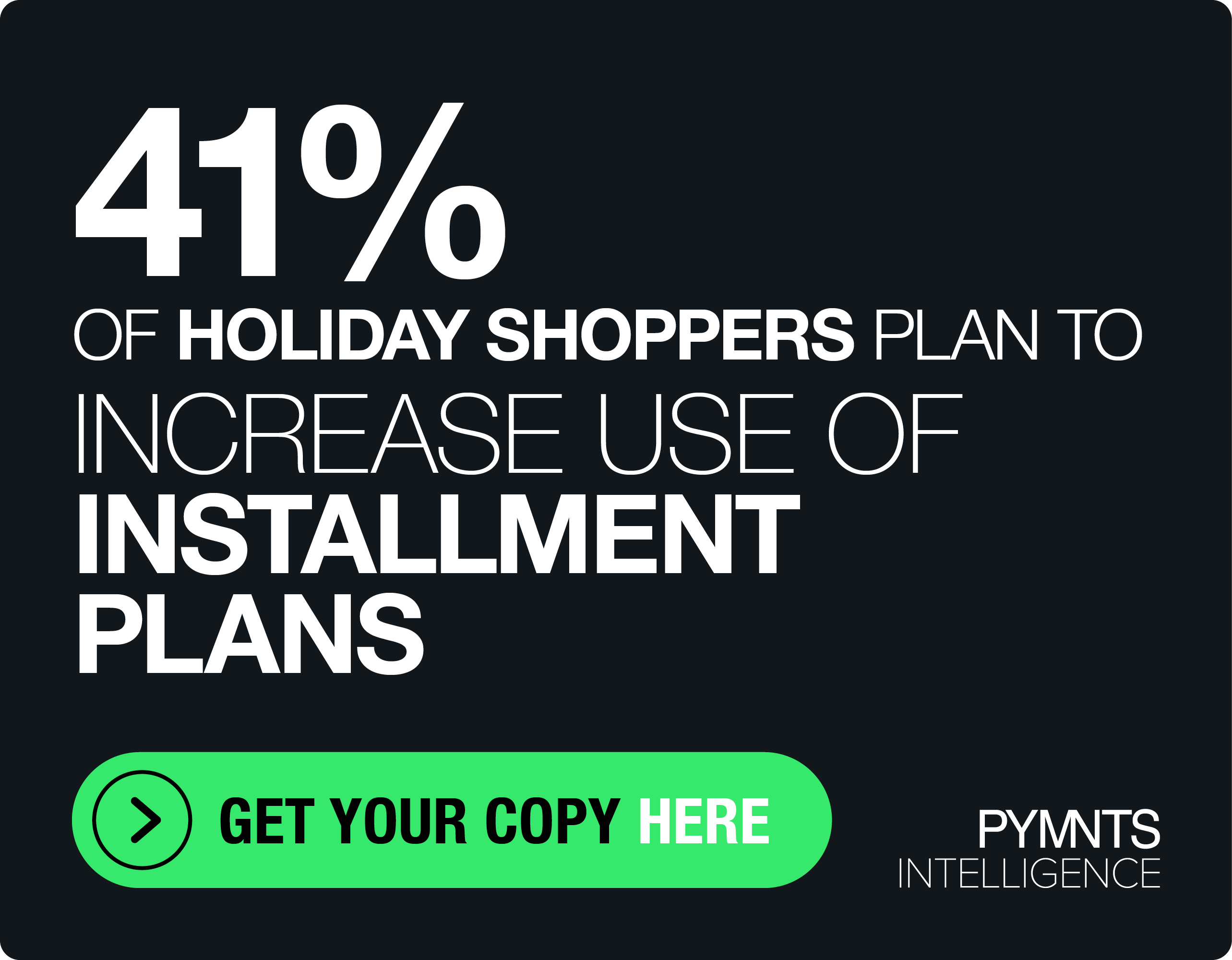First Data: Connected QSRs And Serving The Market Of One

Call it the market of one. In the age of connectivity, when mobile devices have meant a sea change in how we dine (how we order, eat and pay), restaurant firms have the opportunity to build consumer connections that are based on customization and customer service.
As noted last month in the “Commerce Connected Playbook: QSR Edition,” via partnership between PYMNTS and First Data, the quick-service restaurant (QSR) industry is on track to continue a decade and a half’s worth of growth in a sizable market, which will see $256 billion spent on burgers, pizza, chicken sandwiches and the like.
Nearly half of all consumers now regularly use mobile ordering apps, and are projected to spend as much as $40 billion in ordering through connected devices by 2020. The mobile order-ahead and re-order efforts span marquee names such as Starbucks, of course, Wendy’s and Chick-fil-A. Across a landscape where 40 percent of consumers have said they placed a food order using their smartphones within the last three months (and only 11 percent had used mobile order-ahead a scant three years ago), growth in the rearview mirror has been explosive, though spending through connected offerings still has much runway ahead.
In the wake of the Playbook’s release, First Data’s Glenn Fodor, head of analytics, and John Nicola, head of the QSR and retail verticals, spoke with Karen Webster about the growth of consumer spending at restaurants, including QSRs, which grew in the mid-single digits during the year’s second quarter and outpaced spending in grocery stores. That is especially important, considering that QSRs comprise about 40 percent of total restaurant spend.
Speaking to the macro environment, Fodor said the stage is set for continued growth in QSR spend.
“Dining out versus dining in is tightly correlated to the economic environment in general,” he told Webster, noting that consumer confidence is up and the job market is good. “The numbers do not lie” when looking across consumer spending in general. There is also evidence from the strong start to the holiday season of continued healthy sentiment, he said, with a nod toward First Data’s recent parsing of Thanksgiving and Black Friday data.
Beyond the macro, in QSRs, Fodor said, there is the continued integration of new technologies that seeks to take the line out of the equation.
Nicola said that, broadly speaking, technology “allows the consumer to be in control of their own service, and how they interact with the restaurant brand. … They can use technology to make payments just seamlessly happen. And that technology can blend into that consumer’s buying behavior and give them a level of convenience that allows them to enhance their own experience along the way.”
The Certainty Factor
In tandem with the recognition that mobile order-ahead can streamline the wait and ensure that transactions happen, Fodor noted that every QSR restaurant “that is worth their salt is expanding their menu” to include new payment options. The time savings add up when one considers just how often consumers — especially among the younger generation — dine out.
The certainty factor — where consumers know food will be waiting for them when they want it, and merchants know they have made the sale — can add up to more than dollars and cents. Fodor said, “The carving out of five minutes here and 10 minutes there, and putting it back in their pockets, is of value.”
Nicola noted that, going back a few decades, most QSRs did not accept any kind of payment other than cash.
“But now,” he said, “electronic payments are well-regarded and have 100 percent penetration into every QSR, inclusive not only of debit and credit cards, but their own branded currency gift cards. … The marriage of mobile technology and service is put right into the consumers’ hands and how they want to experience the brand itself.”
The Loyalty Factor
Amid convenience comes loyalty, if QSRs leverage the tools at hand. Nicola said there has been experimentation in the past with various incentive programs. However, for QSRs, “what it really comes down to is expanding the buying behavior, whether it is the expansion of the total basket or the reach and frequency of consumers’ [visits].”
For effective incentivizing via the loyalty programs, geared toward promoting those repeat visits, “it really comes down to simplicity,” said Nicola. Starbucks and Chick-fil-A have done well here, with programs that are akin to “gamification” of loyalty. Think of Starbucks, which has managed to boost its loyalty membership rosters by double-digit percentages.
In terms of payments as a conduit to loyalty (and vice versa): “When we tie that into the gift side,” he continued, “what we [saw about] 10 years ago was the instrument we call a gift card” change into a spending scale of sorts. Consumers load value onto those cards and budget their own consumption. The merchant has the chance to drive down the total cost of payment and have a branded-currency option in place for consumer engagement.
“We see those two combinations rapidly growing across the industry, not just the leaders that you see in the space today,” Nicola told Webster of QSRs that are embracing dedicated rewards cards. That comes as Gen X and Gen Y are more credit card-averse than, say, baby boomers.
Data, Data, Everywhere
Crafting a tailored experience for the consumer is made possible only by rich data, mined and used in a timely manner, via artificial intelligence (AI) and machine learning, said Fodor and Nicola.
Fodor stated that for firms of all sizes, not just the big QSRs, “you have a lot of transactions on which to draw conclusions” across demographics and buying behavior. He said apps are pre-populated with what customers are most likely to consume, and can benefit restaurants that are able to, for example, send push notifications about certain promotions. Fodor added that “a lot of the data work that is going on behind the scenes involves the back office in the marketing department,” which can then be parlayed into strategies that are proactive, rather than reactive.
In one illustration, knowing a consumer has a fondness for cookies, but eschews ice cream, can make for a successful targeted campaign — the market of one, as referenced above. With such marketing possibilities, Nicola said the role of the chief marketing officer (CMO) is changing, as is the role of the chief digital officer (CDO). Both must ensure that apps interact with the point of sale, the kitchen and, of course, the consumer to provide a seamless experience, layered on top of legacy platforms.
Data, too, brings to mind the ways AI can be instrumental in mitigating fraud. As Nicola said, “many of the QSRs have had a closed environment that has been predominantly driven by payments terminals. Now, you have an open eCommerce mobile environment” that is vulnerable. AI can help pinpoint consumer behavior and transactions (especially card-not-present) that are trustworthy — or not.
Both executives noted a shifting of the QSR playing field. For smaller firms that may not have CMOs and CDOs on staff, technology can be used to scale up and down as a QSR’s fortunes change. They can pop new apps and platforms into the ecosystems without having to change much in the way of infrastructure.
“With a relatively modest budget, the right engineering team, and the right ingenuity and creativity,” Nicola said, the small QSR can “build a pretty good digital ecosystem. The miniaturization of tech has led to democratization.”
